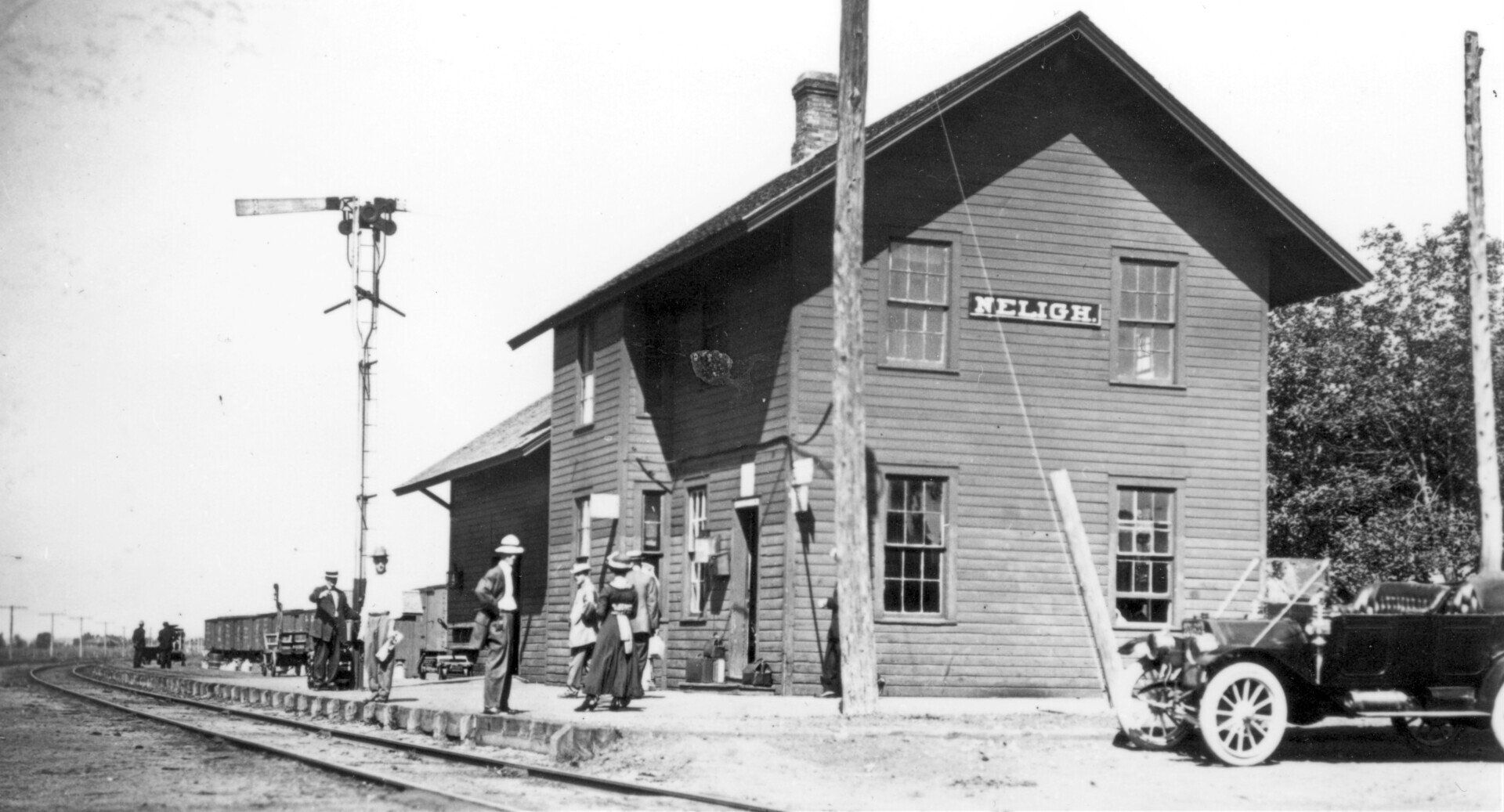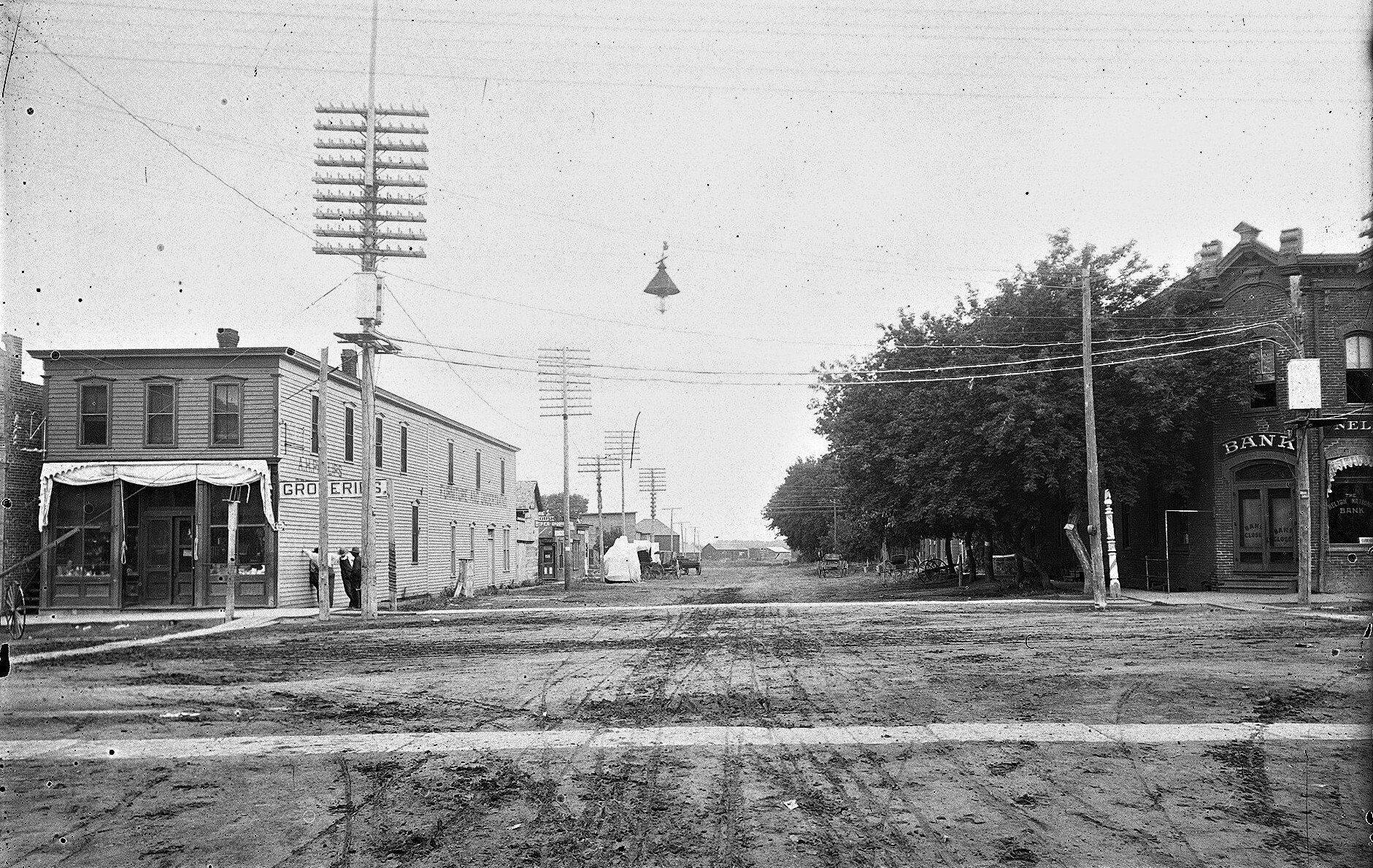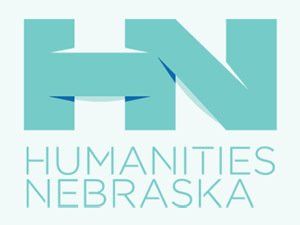Neligh, Nebraska
Neligh History
Neligh (pronounced Nee'Lee), near the center of Antelope County, is one of the towns with a name that is not duplicated elsewhere in the United States.
In 1872, John Neligh, impressed by the advantage offered by the Elkhorn River for water power, purchased land from the Omaha & Northwestern Railroad. He immediately contracted for brick to build a mill, and set about building a dam across the river. Machinery was installed for a saw mill where the cottonwood was made into lumber for homesteaders and timbers for use in the construction of a flour mill. Even prior to the coming of the railroad, large shipments of flour were made to the Black Hills by wagon train.
Surveyed in 1873, its plat was not filed until 1875. By then homes and businesses dotted the area. The land office, the only one in this part of the state, was established in 1880 (about the time that the Fremont, Elkhorn & Missouri Valley Railroad arrived) and the building boom began. In a few years, Neligh challenged Oakdale for the county seat. After a bitter struggle, Neligh won. The records were moved on January 1, 1884.
Neligh was progressive from the start. A water system was established in 1886, and a volunteer fire department organized the following year. Electric street lights were turned on in 1890. The steady growth continued until 1894, when a severe drought caused a set-back. However, by 1900 the town had recovered and street lights appeared. A Carnegie library was built in 1911.
The "Neligh Journal" was published in 1875, and in 1879, "The Republican" appeared. The "Neligh Leader," established in 1885, was edited by three generations of the Best family. Purchased by Loren Fry, it celebrated 100 years of continuous publication. The "Neligh News," established in 1915, was also purchased by Fry.
A school district was organized in January 1872. In 1896 it became a 12-year institution. Many buildings were added in the west and east wards to accommodate the growing enrollment over the years. In 1975 the Neligh and Oakdale school districts merged to provide the education for students in the area. From 1881-99, Neligh was the home of Gates Academy, established by the Congregational Church.
The community supports many churches: Christian, United Church of Christ, Lutheran, Jehovah's Witnesses, Catholic, Seventh Day Adventist, United Methodist, Calvary Bible and Abundant Life Christian Center.
In addition to the famed Neligh Mill (a NSHS branch museum), three other buildings are also on the National Register of Historic Places: the county courthouse, St. Peter’s Episcopal Church, and an original structure of Gates Academy. The building that was the original girls gymnasium at the academy was used for many years as the county jail. A historical marker is also at the grave-site of White Buffalo Girl, who died during the Ponca Trail of Tears trek from their home in Nebraska to Oklahoma in 1877.
Neligh has three fine parks: Riverside, Russell, and Penn. The community supports a multitude of businesses and professional offices. In accordance with the present trend, many of these are located along Highways 275, 14 and 70, adjacent to the town. Neligh has the offices usually found in county seat towns, and the businesses common to an agricultural area. The community is also served by a hospital, assisted living, nursing home, and related professions. Ground was broken in 1989 for a new library made possible by a bequest from the late Elvin and Viola Butterfield.
The community also has an Educational Service Unit, an American Legion post, country club, Lions club, low-rent housing, a pre-school, and a senior citizens center.
Events that greatly affected the town include the Easter storm of 1873, grasshopper plague in 1874, the blizzard of '88, severe floods in 1905, 1915, 1949, and 1987, plus serious fires in 1944 and 1960, and the farm crisis of the 1980s.
Neligh reached its population peak of 1,800 in 1980. The 2010 census reported 1,599 Neligh residents








